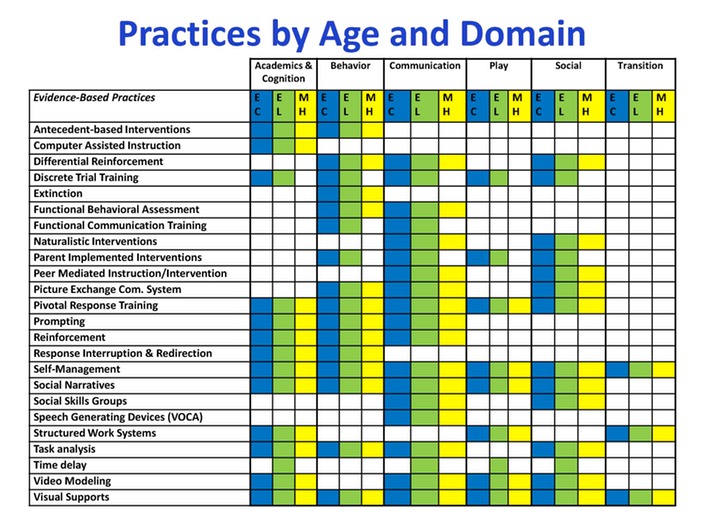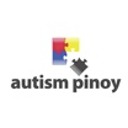What are Evidence-Based Practices (EBP)?
While many interventions for autism exist, only some have been shown to be effective through scientific research. Interventions that researchers have shown to be effective are called evidence-based practices. The National Professional Development Center uses rigorous criteria to determine whether a practice is evidence-based. Currently, the Center has identified 24 evidence-based practices. Please note that every identified practice is not necessarily appropriate for every learner. Practices are most effective when carefully matched to a learner’s specific needs and characteristics.
The National Professional Development Center (NPDC) on ASD has adopted the following definition of evidence-based practices (EBP).
Definition of Evidence-Based Practice:
To be considered an evidence-based practice for individuals with ASD, efficacy must be established through peer-reviewed research in scientific journals using:
·Randomized or quasi-experimental design studies. Two high quality experimental or quasi-experimental group design studies,
·Single-subject design studies. Three different investigators or research groups must have conducted five high quality single subject design studies, or
·Combination of evidence.One high quality randomized or quasi-experimental group design study and three high quality single subject design studies conducted by at least three different investigators or research groups (across the group and single subject design studies).
High quality randomized or quasi-experimental design studies do not have critical design flaws that create confounds to the studies, and design features allow readers/consumers to rule out competing hypotheses for study findings. High quality in single subject design studies is reflected by a) the absence of critical design flaws that create confounds and b) the demonstration of experimental control at least three times in each study.
To date, the NPDC on ASD has identified 24 practices that meet the above criteria for evidence-based practices for children and youth with autism spectrum disorders. We continue to review the literature for practices that meet our definition and will add as appropriate.

For a more indepth description of the EBPs, please visit: http://autismpdc.fpg.unc.edu/content/briefs
To view Awit's presentation/training on EBPs, please visit: http://www.rcselpa.org/Home/Training and click on the Recorded Presentation link
Legend: EC - Early Childhood; EL - Elementary; MH - Middle/High School
